West
‘Happy Face’ serial killer nearly confessed brutal murders to teen daughter: ‘You’ll tell the authorities’
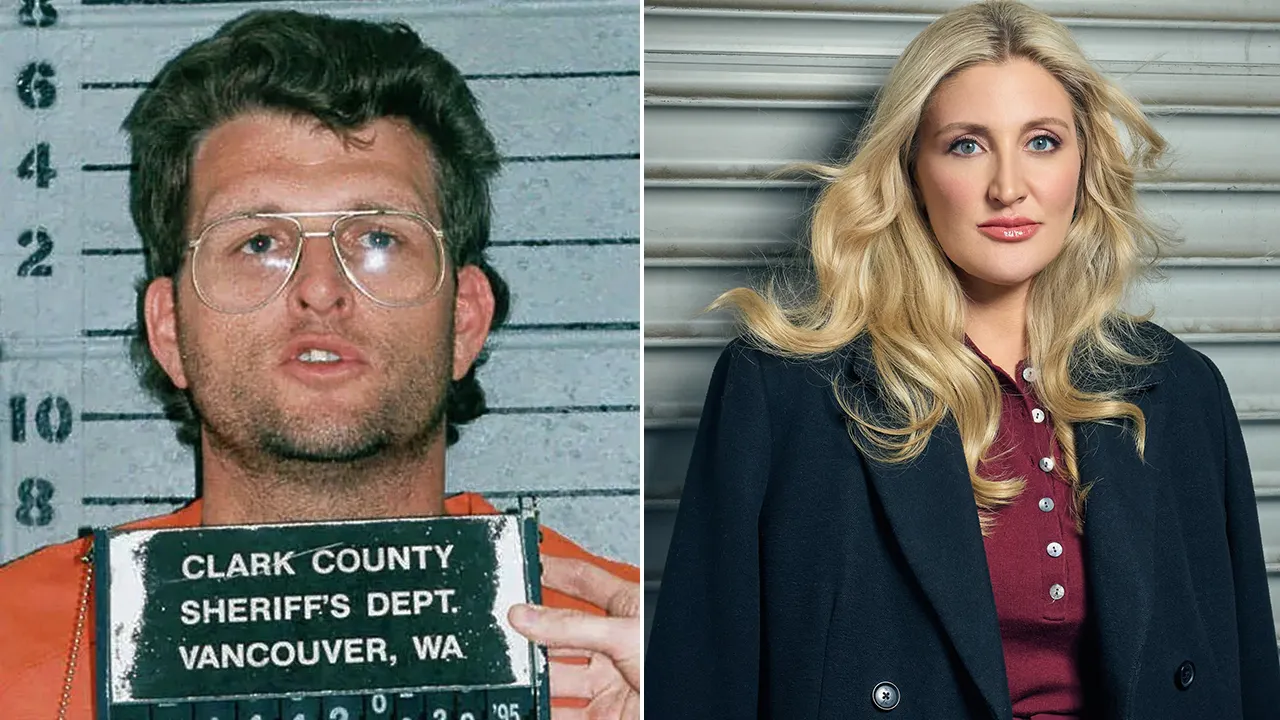
Melissa G. Moore was having breakfast with her father, Keith Jesperson, at a diner when he almost exposed his secret double life.
The high school student, who was gearing up to get her driver’s license, was gushing about getting her freedom. She was also excited to spend time with her father, a trucker who, at that point, was divorced from Moore’s mother.
“I was on the verge of turning 16,” Moore recalled to Fox News Digital. “He made an unannounced visit and asked my siblings and me if we wanted to go have breakfast with him before school started. My siblings had other commitments, so they couldn’t join us. … We talked about what would be my first car. I remember he said he would buy me a Pontiac, and I debated with him.
INVESTIGATORS FIND RELATIVES OF ‘HAPPY FACE’ SERIAL KILLER’S LAST UNKNOWN VICTIM IN MISSION TO IDENTIFY HER
Melissa G. Moore is the daughter of Keith Hunter Jesperson, known as the “Happy Face” serial killer. (Storm Santos)
“Then the topic started to turn to the next time I would see him,” Moore shared. “He was looking forward to seeing us during the summer break. But the way he spoke, it sounded like it was wishful thinking. … Then he started to say, ‘I need to tell you something, but you’ll tell the authorities.’ It stopped me.
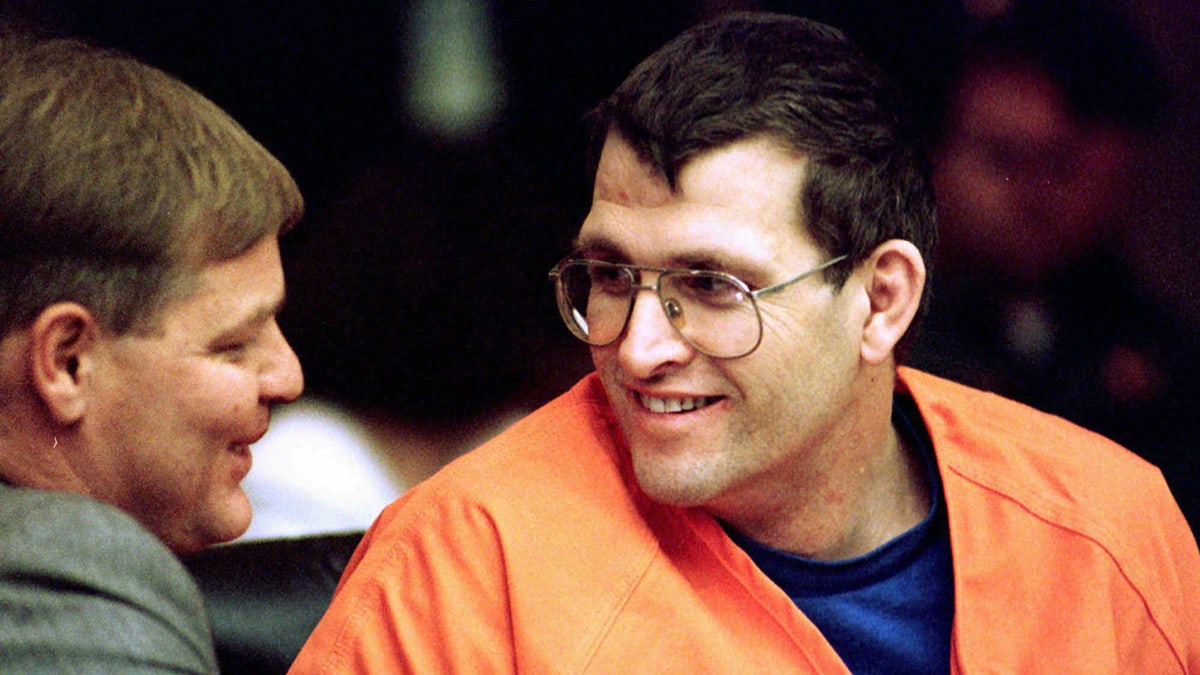
Melissa G. Moore said there were signs early on that something wasn’t right with her father, Keith Jesperson. (AP Photo/Don Ryan)
“At first, I thought, ‘It must be the rumors my mother had told me about, that he had been fired for stealing from his employer.’ Did he steal? I kept pressing it, saying, ‘You could tell me.’ He’s like, ‘No, no, I can’t tell you.’ I started to feel sick to my stomach. I went to the bathroom, and when I returned, our food was there. He was ready to change the subject.
“Looking back on that conversation, I feel he knew that his crimes were catching up to him.”
SIGN UP TO GET TRUE CRIME NEWSLETTER

“Happy Face” is inspired by Melissa G. Moore’s story. She wrote the autobiography “Shattered Silence.” (Paramount+)
Moore was 15 when Jesperson, a prolific serial killer infamous for drawing smiley faces in letters to the media and prosecutors, was captured. The case is now the subject of a Paramount+ true-crime drama, “Happy Face,” starring Annaleigh Ashford and Dennis Quaid.
Moore previously shared her story in the bestselling memoir, “Shattered Silence” and the 2018 “Happy Face” podcast.

Dennis Quaid and Melissa G. Moore attend Paramount+’s “Happy Face” New York premiere at Metrograph March 18, 2025, in New York City. (Theo Wargo/Getty Images)
“I’m proud of this series because I think the family members of victims will feel seen, and so will family members of perpetrators,” she explained. “I’ve never seen anything quite like this. When you watch a show about a serial killer, they don’t show the complex nature of the relationships that they have with their own family.”
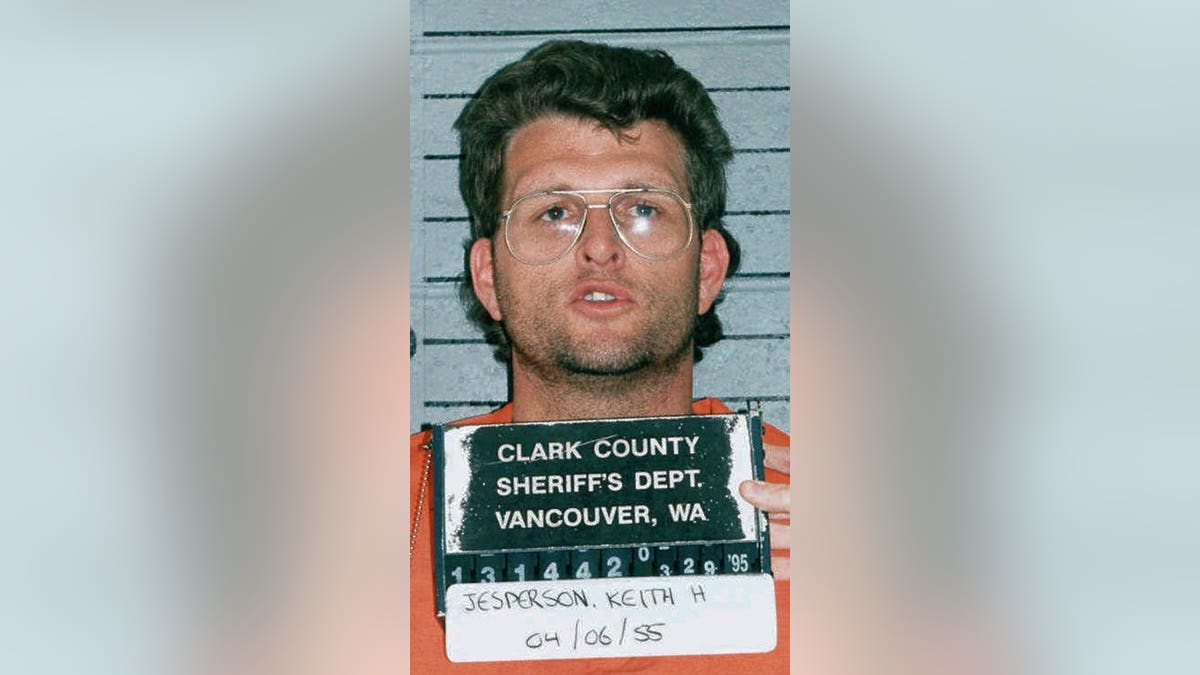
This is a Clark County Sheriff’s office booking photo of serial killer Keith Jesperson, circa 1995. (AP Photo)
Moore described her childhood as “pretty normal” in rural Washington. Her father, who stood at a towering 6-foot-6, 300 pounds, worked as a long-haul truck driver. Her mother stayed at home with the couple’s three children.
“I grew up in the countryside where we had the freedom to roam,” said Moore. “When my dad would come home from his long-haul truck drives, he was very doting. He was very loving.”
WATCH: HAPPY FACE SERIAL KILLER ADMITS TO MURDERING AN EIGHTH VICTIM IN INTERVIEW WITH FLORIDA OFFICIALS
“He used to love riding his bike, and he always wanted us kids with him,” she shared. “He was a very hands-on father. He would read us bedtime stories. He would play games with us. He would hang out with us as much as possible.”

Dennis Quaid as Keith Jesperson in “Happy Face.” (Katie Yu/Paramount+)
But there were signs that her home life wasn’t so idyllic. Moore said that when she was 5 years old, she witnessed “animal abuse on our property.”
“My dad would kill animals for sport,” she explained. “He would kill cats. He would kill dogs. That was something that, as a young person … you just feel that’s not right. But it wasn’t something that was really discussed. It was just Keith being Keith. It’s not that we accepted it, but nobody really wanted to acknowledge it.”
WATCH: ‘HAPPY FACE’ STAR DENNIS QUAID REFLECTS ON PLAYING REAL-LIFE SERIAL KILLER KEITH HUNTER JESPERSON
Jesperson was arrested in 1995 on suspicion of killing his girlfriend in Washington state. He eventually confessed to killing eight women between 1990 and 1995 in California, Washington, Oregon, Florida, Nebraska and Wyoming. The victims, who included his girlfriend, acquaintances and sex workers, were sexually assaulted and strangled.

Keith Hunter Jesperson, 40, right, listens to his attorney, Tom Phelan moments before pleading guilty to murder charges Oct. 18, 1995, at the Clark County Courthouse in Vancouver, Wash. (AP Photo/The Columbian, Troy Wayrynen)
He was arrested just before Moore’s birthday.
“I found out through my mom,” said Moore. “In the series, it’s depicted accurately. I came home from school, and my mother called us siblings together. She had something she needed to tell us. She informed all of us that our dad was in jail and that he was charged with murder. She didn’t give any more details.
WATCH: ‘HAPPY FACE’ STARS JAMES WOLK AND TAMERA TOMAKILI ON WORKING WITH DENNIS QUAID IN SERIAL KILLER SERIES
“As an adult looking back, I imagine that … she probably didn’t feel comfortable discussing those details with us.”
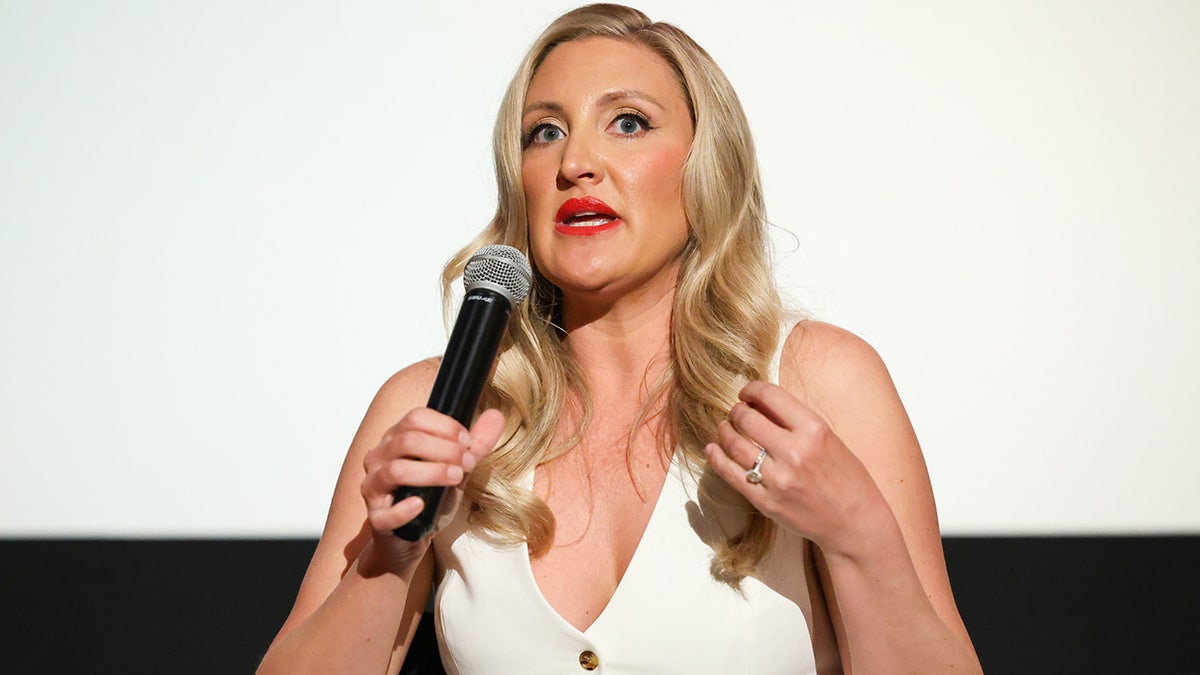
Melissa G. Moore doesn’t have a relationship with her father, Keith Jesperson. (Jesse Grant/Variety via Getty Images)
News quickly spread in Moore’s hometown. Her friends described seeing Jesperson on TV while watching the news, wearing an orange jumpsuit and chained up. He was called the “Happy Face Killer.”
“I was mortified about going to school and deeply ashamed,” said Moore. “Whenever I turned on the TV, there was my father’s face, flashing across. My friends told me that their parents had seen the news, and they didn’t want them to hang out with me.

For the series, Melissa G. Moore provided unread letters from her father. (Amy E. Price/SXSW Conference & Festivals via Getty Images)
“I internalized it,” Moore admitted. “I took it like maybe there was something wrong with me. Maybe the apple doesn’t fall far from the tree. It was the beginning of this deep descent into struggling with my own identity. I internalized his crimes in a way that it wrapped up with my own identity.
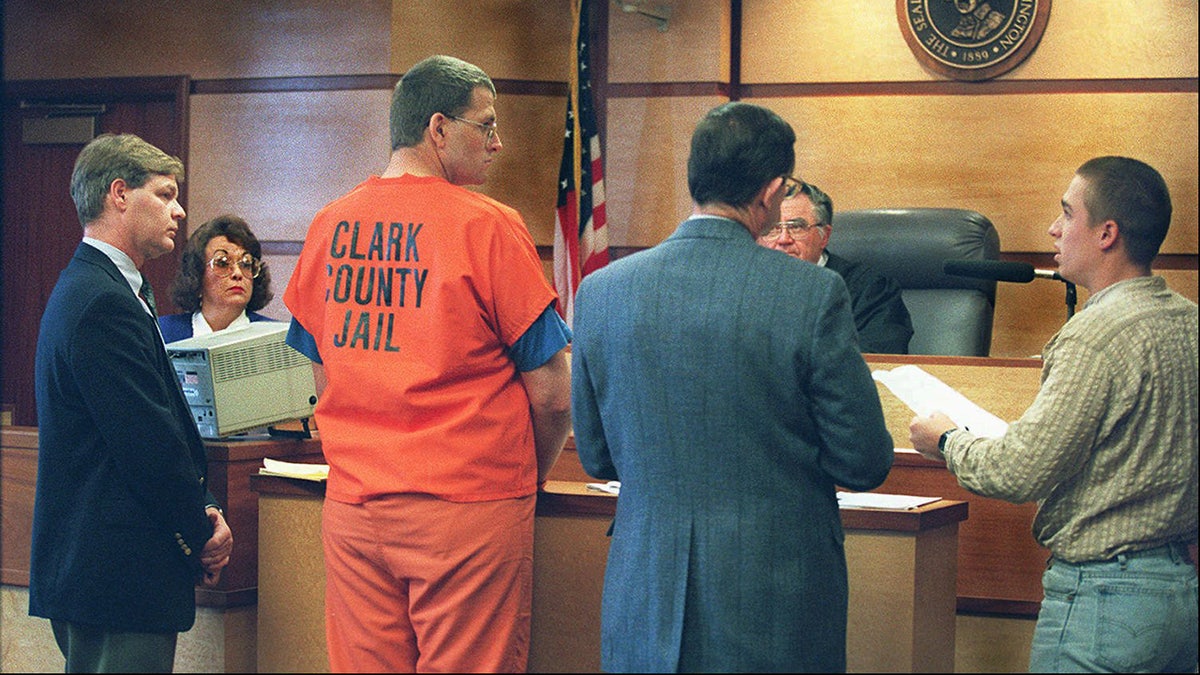
Don Findlay (far right), son of murder victim Julie Ann Winningham, and Keith Jesperson (orange jumpsuit) before sentencing Dec. 19, 1995, in the Clark County Courthouse, in Vancouver, Wash. (AP Photo/The Columbian, Jeremiah Coughlan)
“It’s taken me years to reconcile with that,” the 47-year-old added.
Today, Jesperson, 69, is serving several life sentences without the possibility of parole.
“He has never explained why,” said Moore. “I am still curious why he chose the life that he did and chose to commit these crimes. I believe he felt a deep insecurity within himself and wanted to have control. I would say it was about power and control. … It made this perfect monster.”
FOLLOW THE FOX TRUE CRIME TEAM ON X

Kate Maree as Melissa G. Moore and Dennis Quaid as Keith Jesperson in “Happy Face.” (Ed Araquel/Paramount+)
In the show, viewers will see a letter from Jesperson mailed to Moore. She said the scene was accurate.
“He’s written to me from day one since he entered jail, and [those letters] go unanswered,” she said. “I don’t write him back. I’ve collected them, and I’ve given all the letters over to [executive producer] Jennifer Cacicio. She used the letters for dialogue in the series.
“Sadly, her house was among those lost in the California fires. Those letters were burned. They’re gone.”

Keith Jesperson was nicknamed the “Happy Face” serial killer because he sent letters to the media detailing his crimes, which he committed across state lines as a long-haul trucker, with a smiley face signature at the bottom of each note. (Okaloosa Sheriff’s Office)
Today, Moore has a family of her own. In sharing her story, Moore was able to create a network of more than 300 people who are related to killers, speaking with them on the phone and in person for support, People magazine reported. She previously told BBC News that that project gave her “life meaning and direction.”

Over the years, Melissa G. Moore connected with others who are related to killers and struggling to cope. (John Nacion/Variety via Getty Images)
“I’m not proud of who my dad is, but I no longer feel the need to hide,” said Moore. “I’m no longer attributing his crimes to who I am as a person. And I’m not alone in dealing with these unique issues. … There is no support group for family members of perpetrators. There isn’t really a support group for families of victims. We’re left to ourselves to find other people like us. … They don’t need to be alone in navigating this.”
Speaking out has also helped Moore come to terms with her painful past.

Melissa G. Moore said she’s no longer afraid to share her story in hopes it will help others. (Jesse Grant/Variety via Getty Images)
GET REAL-TIME UPDATES DIRECTLY ON THE TRUE CRIME HUB
“My father gave me my greatest sorrow, which is the trauma of growing up with him as a dad,” she said. “I would say the series does a really good job of showing this deep desire within me to have the father who no longer exists, the father of my childhood. He’s no longer here. Maybe he never really existed.”
New episodes of “Happy Face” will drop Thursdays on Paramount+. The Associated Press contributed to this report.
Read the full article from Here

West
Trans athlete qualifies for California girls' track and field state championship amid federal investigation

NEWYou can now listen to Fox News articles!
A biologically male trans athlete will compete for the girls’ long jump and triple jump state championship in California next week.
The trans athlete finished in first place in both events at Saturday’s California Interscholastic Federation (CIF) Track Championship Masters Qualifiers.
In triple jump, the athlete won with a distance of 40-04.75, while the runner up only reached 39-06.00. In long jump, the trans athlete’s margin of victory was shorter, reaching 19-03.50 while the runner-up managed 19-00.75.
During the long jump medal ceremony, the athlete who finished in third place did not show up and accept the third place medal next to the trans athlete. No reason has been given. The second-place finisher received a noticeably vocal applause.
Tracy Howton, a local parent of an athlete who competes in track and field, attended the event Saturday and had to witness what is becoming a regular site for her and others in the community.
“As the parent of a female jumper, we have watched this happen at the last three track meets. Today we watched incredible female athletes lose their opportunities to go to states to a biological male. I can’t imagine how devastating it would feel to work so hard and then be unfairly stripped of your opportunity to compete at states. It’s heartbreaking,” Howton told Fox News Digital.
“Governor Newsom, our California elected officials and the CIF are failing our girls. It’s that simple. They owe the competitive female athletes of California representation. They owe them responsible decisions based on science and fundamental truth. For our family, this experience has reinforced just how important it is to use your voice to stand up for truth, remembering that bad decisions can be corrected.”
The CIF has been at the center of a national controversy in recent weeks as the trans athlete has dominated the girls’ track and field postseason.
The situation has become so volatile that President Donald Trump’s administration sent a warning to the CIF and the athlete’s high school, Jurupa Valley High School, of consequences for allowing the situation to continue.
CIF is already under investigation by the U.S. Department of Education for defying Trump’s “Keeping Men Out of Women’s Sports” executive order. The federation came under additional scrutiny when its officials allegedly forced athletes to remove shirts that read “Protect Girls Sports” at the Southern Sectional prelims on May 10.
“CIF’s and Jurupa Valley High School’s apparent flouting of federal civil rights law by allowing a male athlete to compete in a female California track and field [Southern Sectional Division 3 final] this Saturday, and the alleged retaliation against the girls who are protesting this, is indefensible,” Julie Hartman, a Department of Education spokesperson, previously told Fox News Digital.
“We will not allow institutions to trample upon women’s civil rights. OCR’s (Office of Civil Rights) investigation into CIF continues with vigor.”
CALIFORNIA GIRLS’ TRACK ATHLETE OPENS UP ON LOSING 1ST-PLACE TITLE TO TRANS COMPETITOR
The Jurupa Unified School District (JUSD) has responded to the controversy in a previous statement to Fox News Digital.
“JUSD continues to follow both California law and CIF policy regarding school athletics. Both state law and CIF policy currently require that students be permitted to participate in athletic teams and competitions consistent with their gender identity, irrespective of the gender listed on the pupil’s records. JUSD remains committed to protecting the rights and safety of the students we serve, in accordance with applicable state and federal laws,” the statement reads.
The situation is set to come to a head next Saturday when the athlete will look to cap off a dominant postseason run with a pair of state titles.
The event will take place at Veterans Memorial Stadium at Buchanan High School in Clovis, California, and will feature a rematch between the trans athlete and a female athlete who has spoken out against her trans opponent’s inclusion.
In long jump, the athlete will face off against Katie McGuiness, who came in second place behind the athlete at last weekend’s sectional final. McGuiness earned an automatic state championship qualification this Saturday with a distance of 18-05.50.
“I ran down the runway, and I landed, and I watched them measure my mark, and it was 18.9,” McGuiness said in an interview on Fox News’ “America Reports.” “And I just remember thinking that there was nothing else that I could do. That was it. And I was honestly very discouraged, and I’m a high school senior and winning CIF has always been a goal of mine, and I wasn’t able to compete with someone who was genetically different than me.”
McGuinness made her overall stance on the issue clear.
“There are just certain genetic advantages that biological males have that biological girls don’t,” she said. “Frankly, I just can’t stand for that.”
Follow Fox News Digital’s sports coverage on X, and subscribe to the Fox News Sports Huddle newsletter.
Read the full article from Here
San Francisco, CA
Pro cricket in the Bay Area: Rules to know, and what you’re watching

Don’t expect many donkey drops at the Coliseum the next week and a half. But there will be plenty of sloggers, dibbly dobblies and, if you listen closely, the sweet – or sickening – sounds of a death rattle echoing through the A’s old home.
Major League Cricket is making its debut in the Bay Area this week. The six-team league, which includes the San Francisco Unicorns, was established three years ago in the hope of exposing the world’s second-most popular sport (after soccer) to a new audience.
Cricket is not new to the United States. The 1844 match between the U.S. and Canada in Toronto is considered the sport’s first international event. But for the most part, interest in cricket in the United States has drawn mostly, well, crickets. Many Americans had no idea there was even a U.S. national team until, led by Oracle developer Saurabh Netravalkar, the U.S. stunned Pakistan in a T20 World Cup match last summer.
The Bay Area is one of the stronger cricket communities in the U.S., so the games in Oakland could draw significant interest. It’ll also appeal to curious sports fans.
For those unfamiliar with cricket, here is a primer about the sport and what’s happening at the Coliseum starting Thursday.
What is the MLC?
The San Francisco Unicorns were a charter member of Major League Cricket in 2023, along with the Los Angeles Knight Riders, Mumbai Indians New York, the Seattle Orcas, the Texas Super Kings, and the Washington Freedom. All the games were played in Grand Prairie, Texas and Morrisville, North Carolina the first two seasons. This season Oakland and Lauderhill, Florida will host nine games each, with the 16 others in Grand Prairie.
The first nine games of the season will be played at the Coliseum, starting with the Unicorns’ opener Thursday at 6 p.m. against Netravalkar and the defending champion Freedom in a rematch of last year’s championship match. The Unicorns also play Saturday (6 p.m. vs. the Knight Riders) and Sunday (6 p.m. vs. MI New York).
The Oakland leg of the season concludes on June 18, when the league moves to Texas for two weeks before the regular season ends in Florida. The playoffs are July 8-13 in Texas.
What’s going on?
Cricket is often compared to baseball. Both are bat-and-ball games where the object is to hit the ball where your opponent isn’t and to score runs. Bowlers, like pitchers, use high velocity and deception to get the ball past their opponent (in this case, to knock over the wicket or stumps) or induce a catchable ball to the 11 defensive players in the field.
Cricket is played on an oval – balls can be batted or deflected in any direction and potentially produce runs. There is no foul territory, which baseball fans who attended games at the Coliseum will find amusing.
MLC plays Twenty20 cricket, a streamlined – and increasingly popular – version of the sport. It’s only been around since 2003 but will be part of the 2028 Los Angeles Olympics, ending cricket’s 128-year absence at the Games. Test matches, the most traditional form of cricket, can last up to five days. One-Day Internationals (ODIs) last around eight hours.
T20 matches take about three hours, and batters tend to be more aggressive because of the condensed format. Following a coin toss to see who bats first, each team plays one inning, which lasts until the team has attempted to bat 120 balls, has scored more points than its opponent or made 10 outs.
There are 10 ways to record an out in cricket. The most common are: caught (a batted ball is caught in the air by a fielder), bowled (the batsman misses the pitch and it knocks down the wicket), given leg before wicket (the batsman used their body to block the ball from hitting the wicket) and run out (a runner is beat to the wicket by a throw or a fielder).
At the center of the playing area is the strip, a 66-foot-long (and 10-foot-wide) stretch with wooden wickets at either end. There is one batter positioned at either end of the strip, and the bowler faces one batter at a time.
If the ball is put in play, the batter and partner stationed on the bowler’s side of the strip can run toward the opposite end (with bats in hand) before one of the fielders knocks down a wicket with a throw, but they don’t have to. (Think of the kids’ game rundown or hotbox.) If the throw beats the runner, they are out.
If both runners are successful, it’s worth one run. If they can cross the length of the strip twice, it’s worth two, and so on. If a ball rolls or bounces outside of the edge of the oval (called the boundary and typically roped off), it’s worth four points. A ball that clears the boundary on the fly (between 250-300 feet) is the cricket equivalent of a home run and worth six points.
Using a straight-arm delivery – bending your elbow to throw is illegal – the hardest-throwing bowlers don’t quite reach 100 miles per hour. The balls are slightly harder and smaller than a baseball. The balls have a raised seam down the middle, which is very useful because most “pitches” are intended to be skipped on the ground near the feet of the batters. Some bowlers are skilled enough to skip the ball around the batter to strike down the wicket.
Bowlers throw six pitches and then are subbed out (called an over). Unlike in baseball, bowlers can sub back in, but only for four overs. T20 matches consist of 20 overs. Batsmen continue until they make an out.
Who’s winning?
A successful inning for an individual batter is around 40 runs, and 160 is considered a good team score.
But following the score as the match progresses can be confusing.
The first thing to remember is the teams do not alternate batting. Team A will face its 120 pitches or make 10 outs, then Team B bats.
Here is how last year’s title match between the Unicorns and the Freedom looked:
Freedom 207/5 (20 overs)/ Unicorns 111 (16 overs)
What it meant: The Freedom batted first and scored 207 points and made five outs in 20 overs. The Unicorns scored 111 points before they made their 10th – and final – out in the 16th over.
IN CASE YOU HEAR IT
Wicket – The Aloha of cricket jargon has multiple meanings. The most common is the three wooden posts (or stumps) positioned behind the batter and held together at the top by two bails. The pitch, the strip in the center of the playing surface where the bowler faces the batter, can also be called the wicket, and a batter who is put out can be referred to as taking a wicket.
Sticky wicket – Originates from references to when a wet pitch (or the wicket) is drying out after a rainstorm, creating inconsistent bounces. Also known as sticky dog.
Biffer – A big, aggressive hitter looking to slog the ball – hit it high and far. A batter swinging for the “boundary” and six points. The opposite is a rabbit, who bats low in the order and is not a good hitter. Even worse is a ferret.
Pie chucker – A bowler who is easy to get a hit against. Also called cafeteria and buffet bowling. A dibbly dobbly is an easy pitch to hit, but can induce non-scoring contact.
Crease – A series of straight white lines painted at the edge of the pitch near the wickets used, among other things, to judge if a run has been scored.
Death rattle – The sound of the ball missing the bat and breaking the wicket.
Duck – When a batter is dismissed without scoring a run. Golden duck is retired on the first ball thrown.
Peach – A high velocity ball that is practically unhittable. A corker is similar, but because of location or movement and not speed. A donkey drop can also be nearly unhittable – a lob, similar to the eephus pitch in baseball thrown as high as possible in an attempt to drop behind the batsman onto the wicket.
Perfume ball – A ball that bounces near a batter’s face, close enough to smell it.
Sledging – Trash-talking during the match. Some players are world class.
Gardening – When a batter scratches at the pitch with his bat between deliveries, usually to try and smooth out the surface. A pitch that is uneven or has cracks is considered spicy.
Boot Hill – The defensive area to be covered on the batsman’s dominant side. High upside to get an out but perilous because of the location. Much like the “hot corner” in baseball.
Chucker – A bowler who delivers with a bent elbow. Implies the bowler is cheating.
If you want to go
There will be at least one match at the Coliseum every day from Thursday through June 18. Two matches are scheduled for Saturday and Sunday.
The games will be streamed on WillowTV, Sling TV and CBS Sports Network.
More information: https://www.majorleaguecricket.com/
Originally Published:
Denver, CO
City of Denver has paid out more than $18M in settlements related to 2020 protests

DENVER — Community organizer Brian Loma remembers wearing his homemade “PRESS” helmet during the summer of 2020, when crowds filled downtown Denver streets to protest police brutality after the murder of George Floyd in Minneapolis.
Those protests turned violent and led to several lawsuits and claims of more police brutality. Loma was involved in one of those lawsuits.
“I’m filming,” he recalled, describing the situation during one of the protests. “I have a camera. I don’t have a rock. I’m not here to damage anything. I’m filming.”
Loma alleges that at one point during a protest, he was burning sage and praying when he was attacked by Denver police.
“I started getting shot with pepper balls,” he said. “There wasn’t mass crowds. There wasn’t violent lines of people throwing water bottles or rocks or anything. It wasn’t with a massive group. I was there and I was praying.”
That account is part of a lawsuit settled by the City of Denver this week. Loma received a $135,000 payout to settle his claims from that night.
“You know, I’m not out there filming these events, participating, because I want a payout,” he told Denver7 Tuesday. “That’s not the point. The point is to have accountability, be the eyes and ears [of the public].”
Denver7 has followed the settlements between the City of Denver and protesters. Read our previous coverage below:
In total, the City of Denver has paid out more than $18 million in settlements related to the 2020 protests. Denver City Councilwoman Shontel Lewis said the city needs to be more accountable, especially as it faces a $250 million budget shortfall.
“When we’re looking at an ask to furlough, to lay folks off, but we’re also paying out settlements and large sums, we have to ask ourselves — because we talk about this all the time — if budgets are moral documents, what does that say about our morality?” Lewis said on Tuesday.
Lewis believes a less punitive culture within the Denver Police Department, or better alternatives to address community needs, would mean fewer of these claims and lawsuits.
“There are a number of things that you can do where you could have less reliance on the police and more reliance on community organizations and community and solutions that are embedded in [and] deeply rooted in community care,” she said. “But I don’t think we do that.”
Former Denver Police Chief Paul Pazen led the department during the 2020 protests. Denver7 Investigates asked him about the department’s actions leading to millions in payouts.
“A lot of these cases have gone on,” Pazen said. “They’ve been appealed. The city has won several of these cases, as well, which often doesn’t get talked about as much as it should.”
- Hear more from former Chief Pazen in the video player below
Denver7 Investigates talks with former Denver Police Chief Paul Pazen ahead of ICE Out! protest
Pazen said it’s often agitators in the crowd that spark violence.
“Working with the community is the way to address these types of situations, but this is not a one-way street,” he said. “If you have organizers of peaceful protests that step up and get rid of agitators, you will have a peaceful, successful protest. When people start to cause damage, destruction, get involved in violence, then a police department has to respond. That is their duty in order to stop the violence.”
Denver PD declined to comment on the settlement payouts, but did respond to Denver7’s question about how the department has changed its crowd control policies since 2020. The department provided the following examples, but did not include further details:
- The elimination the use of 40 mm less lethal equipment for purposes of crowd control
- Modified the way officers are permitted to use pepper balls for purposes of crowd management
- Less lethal equipment training enhanced to help ensure appropriate use in crowd control settings and understanding of commands
- All officers have received additional training on crowd control response and rapid deployment vehicle tactics
After five years, Loma calls the wait for change “painstaking.”
“Reform does happen slowly, but sometimes it feels like we take two steps forward and take one step back,” he said. “Maybe there is reform happening, right? Maybe it does happen, but it’s a long, slow, arduous process.”
Denver7 | Your Voice: Get in touch with Ryan Fish
Denver7’s Ryan Fish covers stories that have an impact in all of Colorado’s communities, but specializes in covering artificial intelligence, technology, aviation and space. If you’d like to get in touch with Ryan, fill out the form below to send him an email.
-

 West4 days ago
West4 days agoBattle over Space Command HQ location heats up as lawmakers press new Air Force secretary
-

 Alaska1 week ago
Alaska1 week agoInterior Plans to Rescind Drilling Ban in Alaska’s National Petroleum Reserve
-

 Education1 week ago
Education1 week agoVideo: Inside Trump’s Attack on Harvard
-

 Technology1 week ago
Technology1 week agoMicrosoft will finally stop bugging Windows users about Edge — but only in Europe
-

 Politics1 week ago
Politics1 week agoCalifornia beach ‘Resist!’ protest pushes ‘kindness’ while calling to ‘86 47’ in anti-Trump message
-

 Politics1 week ago
Politics1 week agoRed state tops annual Heritage Foundation scorecard for strongest election integrity: 'Hard to cheat'
-

 World1 week ago
World1 week agoSouth Korea’s presidential election aims to restore democratic credentials
-

 World1 week ago
World1 week agoTwo suspected Ugandan rebels killed in Kampala explosion












